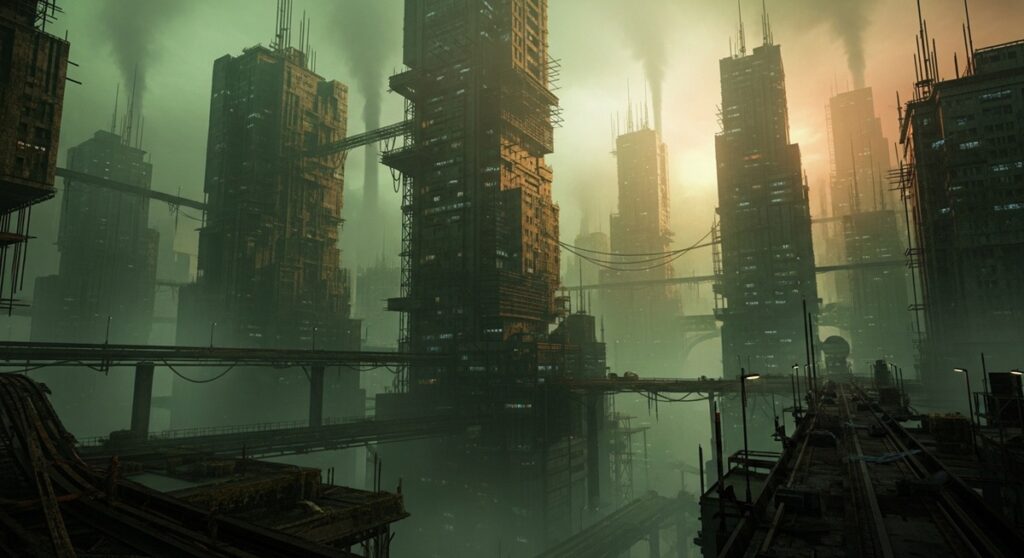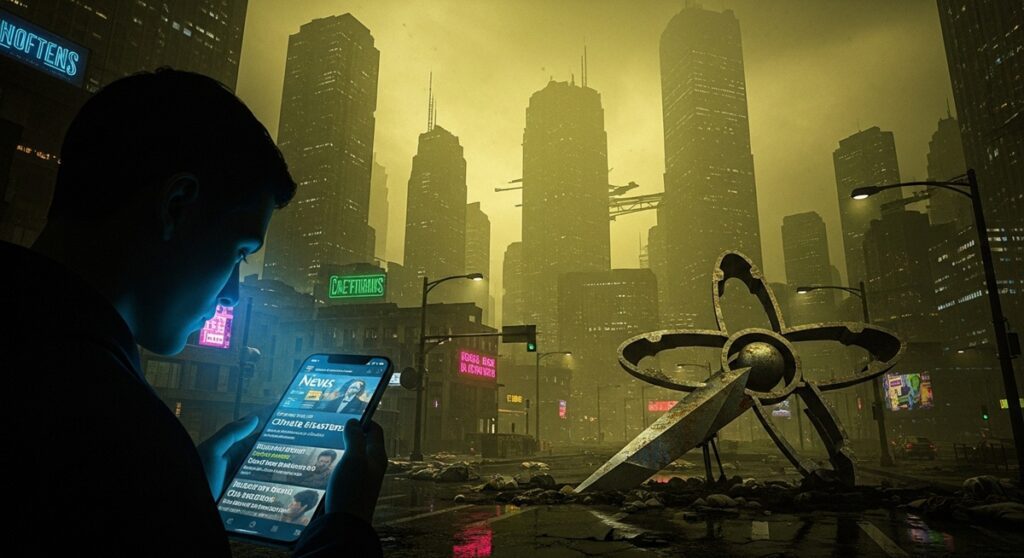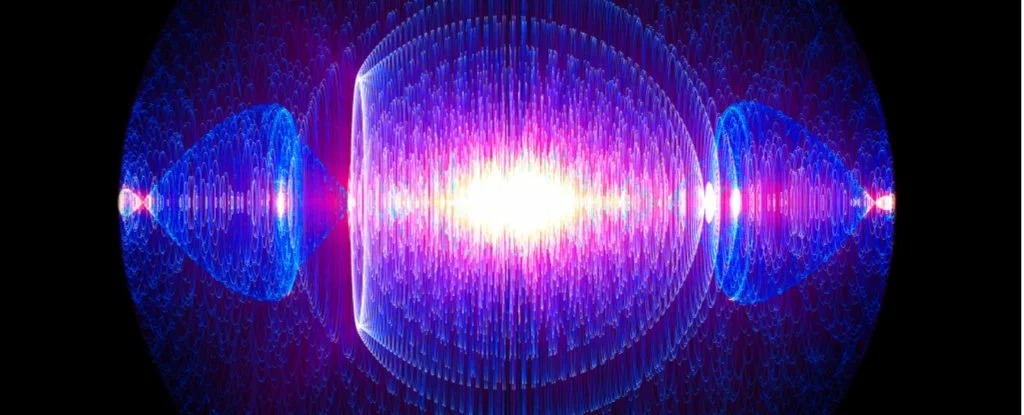The ground beneath our feet carries secrets of betrayal, etched in layers of sediment that serve as a silent indictment of our own making. Dust from nuclear firestorms mingles with the pollen of vanished forests, while plastic ghosts drift through ocean trenches like forgotten prophecies. This is the pulse of the planet we’ve rewritten in our image, a fever dream where humanity plays god and the earth stirs in uneasy sleep. We call it the Anthropocene, the age of us, and for a fleeting moment in 2024, the gatekeepers of geological time slammed the door shut. But doors like that creak open in the dead of night, haunted by the very shadows they tried to banish. The rejection wasn’t an end, but a unraveling—a thread pulled loose from the tapestry of time, revealing not just our scars on the world, but the wild, untamed futures clawing to break free.
In the dim-lit chambers of scientific debate, where rock samples and isotope ratios stand in for ancient witnesses, the Anthropocene flickered like a candle in a storm. It was born in the smoky haze of human ambition, a term that slithered into existence to name the unnameable: our dominion over the dirt and sky. Yet here we stand, a year and a half after that fateful vote, in the lingering twilight of the Holocene, pondering not defeat, but resurrection. This journey through stagnation and transformation is about chasing the ghosts that refuse to lie down, the ones that murmur of what we’ve wrought and what we might yet salvage from the ruins.
The Shadow of the Vote: Echoes from the Earth’s Deep Memory
A cadre of geologists, those stoic archivists of stone, huddled over proxies of plutonium-laced mud from a Canadian lake bed in March 2024. The International Commission on Stratigraphy, that unyielding arbiter of epochs, cast their ballots. No, they decreed. The Anthropocene would not supplant the Holocene, that gentle interlude of 11,700 years marked by the slow thaw after the last ice age. The vote sliced through the air like a cold wind off a receding glacier, ending a saga that had simmered for decades. But endings, in the grand theater of geological time, are illusions—mere pauses where the script twists into something darker, more insistent.
The controversy slunk in from the fringes of 19th-century reverie, when George Perkins Marsh, that sharp-eyed diplomat with ink-stained fingers, penned Man and Nature in 1864. Marsh didn’t mince words; he saw humanity not as stewards but as geological titans, our plows and forges rivaling the erosive fury of rivers and the cataclysmic churn of volcanoes. “Man has become a geological force,” he wrote, his prose a harbinger of the unease that would one day consume us. Fast-forward to the turn of the millennium, and the term crystallizes in the minds of Paul Crutzen and Eugene Stoermer—two visionaries in the alchemical brew of earth sciences. In 2000, amid the choking smog of accelerating industrialization, they proposed the Anthropocene as a clarion call: humanity, the central actor in a drama of geology and ecology, our fingerprints smudged across the global canvas for millennia to come.

Why the fuss? Epochs are the spine of stratigraphy’s skeletal classification, vast chapters spanning millions of years. The Holocene, our current berth, feels like a brief exhale after the Pleistocene’s frozen convulsions. To carve out a new epoch so abruptly—barely a blip in deep time—rattled the purists. It smacked of hubris, of injecting human vanity into the impartial ledger of rock layers. Yet proponents argued it captured a rupture: the moment when our species tipped from passenger to pilot, steering the planet toward uncharted tempests.
Roots in the Soil: From Marsh’s Warning to Crutzen’s Prophecy
This lineage traces a labyrinth of human folly, where each turn reveals a deeper shade of our entanglement with the world. Marsh’s Vermont hills, scarred by reckless logging and floods, weren’t just local tragedies; they were microcosms of a creeping planetary malaise. He dreamed of restoration, of hands mending what axes had sundered, but his vision curdled into prophecy as the 20th century unleashed its mechanical furies. World wars, atomic dawns, the postwar boom—these weren’t footnotes but seismic shifts, the “Great Acceleration” that propelled us from agrarian whispers to digital roars.
Crutzen, Nobel laureate with a gaze fixed on atmospheric veils, and Stoermer, limnologist attuned to the subtle songs of lakes, didn’t invent the idea; they named the beast. Their 2000 manifesto, tucked into the pages of the International Geosphere-Biosphere Programme, resonated like a tolling bell:
“Given these and many other significant and still growing impacts… it seems more than appropriate to emphasize the central role of humanity.”
It was a gauntlet thrown at the feet of complacency, inviting us to confront the mirrors we’d shattered in our rush forward. Stratigraphers, ever the empiricists, took up the challenge in 2009, birthing the Anthropocene Working Group—a motley assembly of drill-core diviners and isotope shamans—to hunt for the epoch’s elusive dawn.
The Golden Spike That Wasn’t: Pinning Down the Unpinnable
Precision is god in the ritual of epoch-making. Each era demands a “golden spike”—a stratigraphic scar, a layer of unmistakable sediment screaming “here, now, change.” The Holocene’s is humble: a spike in deuterium isotopes from Greenland’s ice, marking the retreat of glaciers like a sigh of relief. For the Anthropocene, candidates abounded, each a talisman of our trespasses. The Columbian Exchange, that 15th-century swap of seeds and scourges across oceans? Too diffuse, a slow poison rather than a thunderclap. The Industrial Revolution’s coal-choked belches in the 1800s? A contender, but its tendrils lacked the global grip.
The Great Acceleration, that postwar frenzy from the 1950s onward, emerged as the frontrunner: plastics proliferating like synthetic skin, fertilizers flooding fields into verdant excess, megacities birthing concrete labyrinths. Metrics soared—population doubling, carbon emissions tripling—while biodiversity bled out. The working group zeroed in on 1950, or more precisely, July 16, 1945, when the first atomic test at Alamogordo scarred the New Mexico desert. Plutonium, that man-forged demon, rained global, embedding in ice caps and peat bogs as an indelible brand. Crawford Lake in Ontario, with its varved sediments like pages in a doomsday diary, became the proposed shrine—a place where the spike could be hammered home.

Poetry laced this grim choice: our epoch baptized in the blood of fission, a symbol of hubris that outstrips even the asteroid that felled the dinosaurs. But poetry falters in committee rooms. Critics decried the pinpoint—too recent, too Eurocentric, ignoring millennia of agrarian upheavals from rice paddies to Roman aqueducts. Indigenous voices, long sidelined, pointed to colonial wounds as the true genesis: the 1610 “Orbis Spike,” a plunge in atmospheric CO2 from depopulated Americas, forests reclaiming ravaged lands. The vote in 2024? A resounding no, 12-4 against, dooming the proposal to stratigraphic purgatory. We remain Holocene dwellers, officially, but the earth knows better. Its archives pulse with our perturbations, a chorus of change that no ballot can silence.
Beyond the Stratigraphic Grave: The Anthropocene’s Undead Legacy
Rejection should have been a burial, but the Anthropocene rose like mist from a bog—elusive, pervasive, refusing the coffin of formality. In the months since, it’s metastasized beyond geology’s cloisters, infiltrating the arteries of culture, science, and the shadowed corners of our collective psyche. Journals like Anthropocene churn on, conferences convene under its banner, artworks bloom like radioactive orchids. Why? Because it’s a mirror, cracked and unflinching, reflecting the dystopian sprawl we’ve authored.
The arts bear this haunting like a recurring specter. Grimes’ Miss Anthropocene (2020) pulses with synth-soaked elegies to our poisoned paradise—”Delete Forever” a dirge for digital ghosts, “You’ll Miss Me When I’m Not Around” a sly wink at extinction’s edge. Literature fares no better: Richard Powers’ The Overstory weaves human folly into arboreal revenge tales, while Amitav Ghosh’s The Nutmeg’s Curse dissects planetary plunder as imperial original sin. Even in 2025’s fevered discourse, from COP30’s frantic pleas to X’s viral laments over Amazonian dolphins gasping in 41-degree waters, the term lingers—a shorthand for the metaphysical malaise of being human in a world we’ve bent to breaking.
Echoes in Canvas and Code: Cultural Phantoms of the Human Age

Galleries confront us with the Anthropocene’s stare, from installations of melted ice sculptures or drone footage of bleaching reefs, evoking not pity but a primal dread. What if our cities, these hives of neon and noise, are but preludes to feral reclamations? Films like Don’t Look Up satirize our denial, but beneath the laughs lurks a dystopian truth—comets of our own devising hurtling toward us. On social scrolls, it’s weaponized: threads decry “Confusedocene” absurdities or rally against Big Pharma’s viral legacies, tying personal collapse to planetary fever. This cultural osmosis frees the term from pedantic chains, letting it symbolize not just ruin but resilience—the spark in stories where mycelial networks outwit monocrops, where indigenous wisdoms chart escapes from the machine.
Scientific Resurrection: From Epoch to Eternal Event
Science has alchemized defeat into evolution. Post-vote papers in AGU Advances reframe the Anthropocene as an “event”—an ongoing convulsion, not a bounded interval. It’s the triphasic beast: pre-industrial nudges, colonial escalations, and the postwar blitz. This shift empowers, they argue, unburdening us from the vote’s stasis to probe human impacts’ layered legacies. Climate discourse? Unscathed. The rejection, as Yale Environment 360 notes, changes naught about melting poles or acidified seas; it merely spotlights the chasm between empirical scars and institutional inertia. In 2025, as wildfires etch mandalas into California’s hills and monsoons drown Mumbai’s slums, the Anthropocene endures as analytical lodestar—a lens sharpening our gaze on the spectrum of futures, from collapse to cunning reinvention.
Stagnation in the Holocene’s Twilight: The Weight of What We Carry
Vitality marks the Anthropocene, yet it drags shadows of stagnation, a dystopian torpor where progress curdles into paralysis. We’re adrift in the Holocene’s amber glow, its stability a mocking relic as sea levels nibble at shorelines and species queue for oblivion. This isn’t mere environmental drift; it’s metaphysical malaise, the soul-sickness of knowing we’ve authored the apocalypse yet scroll past the headlines. Rhetorical thunder—net-zero pledges, greenwashed gadgets—masks the deeper rot: economies hooked on extraction, societies fractured by denial. What does it mean to stagnate in the human age, when our innovations birth infernos? It’s the quiet horror of feedback loops closing: feedback from forests felled, from soils stripped bare, echoing back as floods that swallow homes and fevers that claim elders.

A city at dusk, its towers clawing at smog-veiled stars, holds inhabitants numbed by screens that promise escape but deliver echoes of the same cage. This is our now—a limbo where the Great Acceleration’s momentum stalls against walls of inequity. The Global South bears the brunt: Bangladeshi deltas vanishing under salt, African savannas cracked by drought, while northern boardrooms haggle over carbon credits. Stagnation isn’t passive; it’s the friction of unequal burdens, where the powerful hoard the last gasps of a breathable world. And in this twilight, symbolism sharpens: the atomic spike, rejected, becomes a sword unyielded, rusting in the scabbard of our hesitation. How long can we pretend the Holocene’s cradle rocks us gently, when the earth’s core growls with the weight of our unheeded warnings?
Transformations on the Horizon: Shattering the Mirror of Fate
Stagnation is no terminus; it’s the forge where transformation tempers. Freed from stratigraphic shackles, the Anthropocene invites us to reimagine as co-conspirators in the planet’s sly rebellions. What if we lean into the unknown, trading dominion for dialogue? Visions flicker: regenerative agricultures that mimic mycorrhizal whispers, urban wilds where vines reclaim concrete veins, AI symbiotes optimizing not profit but planetary pulse. It’s edgy alchemy, blending indigenous cosmologies—where earth is kin, not commodity—with techno-utopias that hack the code of collapse.
The spectrum stretches wide: at one end, dystopian freefall—mega-famines birthing border wars, AI overlords rationing the remnants. At the other, a metamorphic dawn, where degrowth philosophies dismantle excess, birthing bioregional sovereignties. The Great Acceleration’s heirs? Not brakes slammed, but vectors redirected—solar sails harnessing fusion’s fire, gene-edited corals defying bleach. Yet transformation demands emotional reckoning: the grief of extinctions past, the rage at stolen futures. Rhetorical questions haunt: Can we, architects of this age, summon the humility to listen—to the wind’s wail over deforested ridges, to the ocean’s murmur of microplastic dirges? In this journey, symbolism reigns: the Anthropocene as phoenix, rising from stagnation’s ash, wings spread over horizons we dare to reshape.

As today unfolds, with COP30’s echoes fading into actionable unease, the term persists as provocateur. It’s the metaphysical hook pulling us from complacency’s couch, urging a dance with the dystopian and the divine. We’ve journeyed through the vote’s chill shadow, past golden spikes that pierced no ground, into cultural crypts where undead ideas thrive. Stagnation clings like damp rot, but transformation beckons—a siren’s call from the unknown, promising not salvation, but sovereignty over our shared saga.
In the end, the Anthropocene isn’t dead; it’s dormant, a seed in frozen soil awaiting the thaw of our awakening. What worlds will we midwife from this gestation? The earth holds its breath, not in judgment, but in quiet complicity—ready, perhaps, to co-author the next chapter. Gaze into that cracked mirror, reader, and ask: whose reflection stares back, and what story shall we tell next?

















